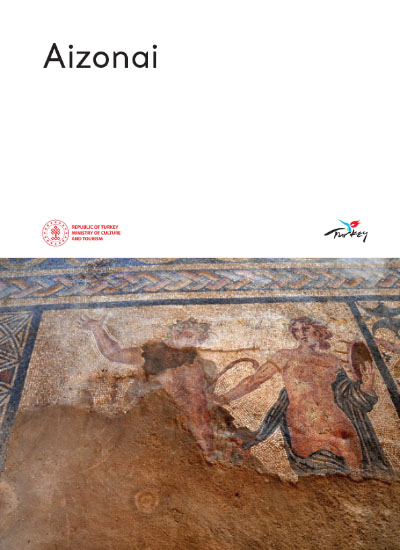Aizanoi Ancient City in Çavdarhisar District of Kütahya has a known history dating back to 3,000 BC. The oldest coin found in the city, which shows the influence of the Amazons and Phrygians, dates back to the 3rd or 4th century. In the Hellenistic Period, a coin known as epikteteis, dated to the 2nd century BC, depicts a horse and a female wearing a helmet, bringing the Amazons to mind. The city became part of the Roman Empire in 133 BC and experienced its peak between 50-250 AD, particularly in terms of its religious and economic identity. It boasts the only unified theatre-stadion complex in the world, with a capacity of approximately 15,000 people per unit, as well as colonnaded streets, agoras, dam structures, waterways, a heraion, an odeion and gates, all of which are architectural structures of a highly developed city. Aizanoi gained the status of Neokoros, a temple guardian city, which came with privileges such as investment priority, tax exemption, and right of asylum. Alongside ancient cities like Ephesus, Pergamon, and Side, Aizanoi Neokoros maintained its religious and economic significance during the early Byzantine period as an episcopal centre. However, after the 7th century, the city gradually lost its importance. Starting in 1071, the Seljuk Turks began to conquer Anatolia. Among them were the Chavdar Tatars, who claimed the depopulated city and used the deserted temple plain as a defense base. These settlers, who were skilled horse riders and gave their name to the city of Çavdarhisar, depicted their nomadic culture, which included horse riding, arrow shooting, and saz playing, on the architectural blocks of the temple. The ancient city was inscribed on the UNESCO World Heritage Tentative List in 2012. The Ancient Temple The Aizanoi Temple of Zeus (Jupiter) / Cybele is a remarkable ancient temple with a rare architectural form. It is double-celled and forms a unity with the colonnaded galleries and the older agora structure. The original superstructure of the temple stands at a height of 9.30 metres and is located in a central position in terms of city planning. The superstructure of the building is supported by monolithic giant columns, which continue to welcome visitors to this day. The front face of the temple features a relief of Zeus on the giant acroter (pediment crown), while the back face features a relief of Cybele. Although some have argued against the presence of two worshippers in one temple, this unique religious situation still holds weight and validity. The sanctuary of Meter Steunene, dedicated to the Mother Goddess, is located in the south-west of Aizanoi. It supports the belief and philosophical background of the region dating back to the Phrygian Period. The sanctuary features a rock throne on a round-planned rock cave, sacrificial pits for bulls dedicated to the temenos, and a deep rock lair that has collapsed due to earthquakes. The Aizanoi Macellum The city's productive and commercial structure, along with its agricultural potential, is noteworthy. The round structure along the river, known as the 'Macellum' and dating back to the second half of the second century A.D., is an organized marketplace open every day of the week. Here, expensive and luxurious products such as meat, poultry, bakery items, cereals, olive oil, rare vegetables and fruits, and especially fresh and processed carp fish supplied with garum sauce, were sold.
AIZANOI ARCHAEOLOGICAL SITE


